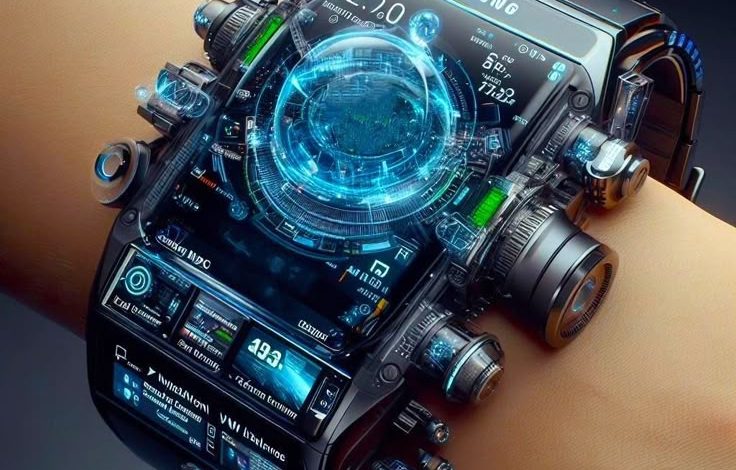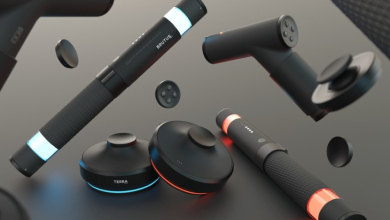Gadget Innovations Fuel Next Tech Breakthroughs

In the rapidly evolving world of technology, gadget innovations have become the catalyst for groundbreaking advancements that redefine our everyday lives. The emergence of new devices and smart technologies not only revolutionizes personal convenience but also transforms industries across the globe. As businesses and consumers alike embrace digital transformation, gadgets continue to push the boundaries of what is possible, fueling the next wave of tech breakthroughs. This article explores the evolution of gadget innovations, key technological advancements, their impact on society and industry, and the future trends that promise to reshape our world. With insights into challenges, case studies, and strategic considerations, this comprehensive guide provides an in-depth look at how innovative gadgets are spearheading progress in the digital age.
The Evolution of Gadget Innovations
Technology has come a long way from the early days of simple mechanical devices to the sophisticated smart gadgets we rely on today. The evolution of gadgets is characterized by continuous improvements in design, functionality, and integration with digital ecosystems. This transformation can be traced through several distinct phases:
A. The Early Era: From Mechanical to Electronic Devices
Historically, gadgets began as purely mechanical tools designed to perform specific tasks. Over time, as electronics entered the scene, devices became more versatile and capable. Early innovations such as the calculator and the digital watch set the stage for more complex technologies.
B. The Digital Revolution
The advent of computers and the internet ushered in a new era of gadgetry. With the integration of microprocessors, devices became smarter, leading to the development of personal computers, mobile phones, and early portable electronics. This period marked the convergence of computing power with everyday gadgets, enabling functionalities that were once the realm of science fiction.
C. The Age of Connectivity
As wireless communication and the internet matured, gadgets evolved to become interconnected. The rise of smartphones, tablets, and wearable devices demonstrated that connectivity was key to unlocking new levels of functionality. Gadgets began to serve as hubs for communication, entertainment, and productivity, creating ecosystems where data and services could be accessed on the go.
D. The Era of Smart Technology
Today, we are witnessing an era where artificial intelligence (AI), machine learning (ML), and the Internet of Things (IoT) drive gadget innovation. Modern devices are not only smart but are capable of learning from user interactions, optimizing performance, and integrating seamlessly into broader digital ecosystems. This continuous evolution has paved the way for innovations that fuel next-generation technology breakthroughs.
Key Technological Advancements Driving Gadget Innovations
Several technological advancements have accelerated the development of innovative gadgets, enabling them to deliver unprecedented performance and capabilities. These advancements include:
A. Miniaturization and Enhanced Processing Power
One of the most significant trends in gadget innovation is miniaturization. As components become smaller and more efficient, devices can pack more power into a compact form factor. This has led to the creation of portable gadgets that offer desktop-level performance. Advanced processors, high-density batteries, and improved thermal management contribute to the robust performance of modern gadgets.
B. Integration of Artificial Intelligence and Machine Learning
The integration of AI and ML into gadgets has redefined their functionality. These technologies enable devices to analyze data in real time, learn user preferences, and adapt to changing conditions. For instance, AI-powered smartphones can optimize battery usage and enhance camera performance based on environmental conditions. In smart home devices, AI algorithms improve automation, ensuring that systems learn from user behavior to create a more intuitive experience.
C. Internet of Things (IoT) Connectivity
IoT connectivity has transformed how gadgets interact with each other and with larger networks. This interconnectivity allows devices to share data and work in harmony to provide comprehensive solutions. From smart thermostats that learn and adjust based on occupancy to wearable health monitors that sync with personal devices, IoT integration is key to unlocking enhanced functionalities and creating interconnected ecosystems.
D. Advanced Sensor Technologies
Modern gadgets are equipped with an array of sensors that gather data from the environment, providing valuable insights and enabling innovative functionalities. These sensors include:
A. Accelerometers and Gyroscopes: Essential for motion tracking and orientation detection.
B. Proximity and Ambient Light Sensors: Improve user experience by adapting device behavior based on environmental factors.
C. Biometric Sensors: Enhance security and personalization by enabling fingerprint scanning, facial recognition, and heart rate monitoring.
D. Environmental Sensors: Monitor factors such as temperature, humidity, and air quality, crucial for smart home devices and wearables.
E. Improved Battery and Energy Management
The evolution of battery technology and energy management systems has significantly extended the usability of gadgets. Innovations such as fast charging, wireless power transfer, and energy-efficient components ensure that devices remain operational for longer periods, even as their capabilities expand.
Impact on Everyday Life and Business
Gadget innovations have far-reaching implications that extend beyond personal convenience, influencing various aspects of daily life and business operations. The integration of smart devices into our routines has transformed the way we work, communicate, and manage our environments.
A. Enhancing Personal Productivity
Smart gadgets have redefined personal productivity by streamlining daily tasks and offering powerful tools for time management. Devices like smartphones, tablets, and wearables provide on-the-go access to calendars, reminders, and productivity apps. They allow users to manage their schedules, monitor their health, and stay connected with minimal effort. The continuous evolution of these tools means that individuals can accomplish more with less friction, making every minute count.
B. Transforming Business Operations
In the business realm, gadget innovations have led to improved operational efficiency and enhanced decision-making capabilities. Modern enterprises leverage smart devices to automate workflows, facilitate remote work, and streamline communication. For example, integrated systems in smart offices can adjust lighting and temperature automatically based on occupancy, while real-time data analytics from wearable devices provide insights into employee productivity and well-being.
C. Driving Digital Transformation
The push toward digital transformation is largely fueled by the proliferation of innovative gadgets. As companies adopt smart technologies, traditional business models are being redefined. Industries such as healthcare, education, and manufacturing are embracing digital tools to improve service delivery, reduce costs, and enhance customer engagement. The integration of gadgets into these sectors not only improves operational efficiency but also opens up new revenue streams and market opportunities.
D. Enhancing Connectivity and Communication
Gadget innovations have drastically improved connectivity, breaking down geographical barriers and enabling seamless communication. With the advent of high-speed internet and wireless technologies, individuals and businesses can connect instantly from anywhere in the world. This level of connectivity has led to the rise of remote work, virtual collaboration, and online learning, transforming how we interact and share information.
Future Trends in Gadget Innovations
Looking ahead, several emerging trends are set to shape the future of gadget innovations. As technology continues to advance, we can expect to see devices that are even more integrated, intelligent, and indispensable.
A. Wearable and Implantable Technologies
The future of personal gadgets is likely to be dominated by wearable and even implantable technologies. These devices will go beyond simple fitness tracking to offer comprehensive health monitoring, real-time diagnostics, and even augmented reality (AR) experiences. Innovations in flexible electronics and biocompatible materials are paving the way for gadgets that seamlessly integrate with the human body.
B. Augmented Reality (AR) and Virtual Reality (VR)
AR and VR technologies are poised to revolutionize the way we interact with digital content. Future gadgets will likely incorporate immersive displays and advanced sensors that blend physical and virtual worlds. These innovations will transform industries such as gaming, education, and retail by providing interactive and engaging experiences that were previously unimaginable.
C. Quantum Computing Integration
Quantum computing represents the next frontier in computational power, and its integration into gadget technology could lead to unprecedented processing speeds and data analysis capabilities. While still in its early stages, quantum computing has the potential to transform areas such as cryptography, materials science, and complex system modeling, ultimately driving the development of smarter and more efficient devices.
D. Sustainable and Eco-Friendly Designs
As environmental concerns continue to rise, the future of gadget innovations will place a strong emphasis on sustainability. Manufacturers are increasingly focusing on creating devices that are energy-efficient, recyclable, and made from eco-friendly materials. This shift toward sustainability not only benefits the environment but also resonates with consumers who prioritize green technology.
E. Enhanced Security and Privacy Features
With the increasing interconnectivity of devices, the need for robust security measures has never been greater. Future gadgets will feature advanced encryption, biometric authentication, and AI-driven threat detection to protect sensitive data. As cyber threats become more sophisticated, manufacturers will continue to innovate to ensure that security and privacy remain at the forefront of technological advancements.
Challenges and Considerations in Gadget Innovations
Despite the rapid pace of innovation, several challenges and considerations must be addressed to fully harness the potential of advanced gadgets. These challenges span technical, ethical, and practical dimensions:
A. Cybersecurity Risks
With the rise in connectivity comes an increased vulnerability to cyberattacks. As gadgets become more integrated into our daily lives, ensuring robust cybersecurity becomes paramount. Manufacturers and users alike must prioritize security measures such as:
A. Multi-Factor Authentication: Implementing layers of security to protect user data.
B. Regular Software Updates: Ensuring that devices are protected against the latest threats.
C. Encryption Protocols: Safeguarding sensitive information during transmission and storage.
B. Data Privacy Concerns
As gadgets collect and transmit vast amounts of data, concerns over data privacy have become a significant issue. Consumers and regulatory bodies are increasingly demanding transparency and control over personal information. Companies must adopt stringent data protection policies and comply with global privacy regulations to build trust and ensure ethical use of technology.
C. Technological Obsolescence
The rapid pace of innovation means that gadgets can quickly become outdated. Continuous advancements in technology often lead to a cycle of frequent upgrades and replacements, raising concerns about sustainability and electronic waste. Manufacturers are now exploring modular designs and upgradeable components to mitigate the impact of technological obsolescence.
D. User Adaptability and Training
Introducing advanced gadgets into both personal and professional settings often requires users to adapt to new interfaces and functionalities. This transition can be challenging, particularly for those who are less tech-savvy. Comprehensive training programs and intuitive user interfaces are essential to ensure that technology is accessible and beneficial to all.
E. Cost and Accessibility
While technological advancements drive innovation, they can also create disparities in accessibility. Cutting-edge gadgets often come with a premium price tag, making it difficult for some segments of the population to benefit from these innovations. Striking a balance between innovation and affordability remains a key challenge for manufacturers and policymakers alike.
Case Studies: Breakthrough Gadgets Leading the Way
Examining real-world examples of successful gadget innovations can provide valuable insights into how these technologies are transforming industries. The following case studies illustrate the profound impact of breakthrough gadgets on various sectors:
A. The Smart Home Revolution
Smart home devices have fundamentally changed how people interact with their living spaces. Products such as intelligent thermostats, smart lighting systems, and voice-activated assistants enable homeowners to control their environments with ease. These devices not only enhance comfort and convenience but also contribute to energy efficiency by adapting to user behavior. The integration of these gadgets into home automation systems demonstrates the power of innovation in improving everyday life.
B. Wearable Health Monitors
Wearable technology has taken a significant leap forward with the development of advanced health monitoring devices. Modern wearables can track heart rate, blood oxygen levels, sleep patterns, and even stress levels with remarkable accuracy. These devices empower users to take charge of their health by providing real-time feedback and actionable insights. The convergence of biometric sensors and AI in wearables is paving the way for personalized healthcare solutions that can potentially save lives.
C. Next-Generation Smartphones
Smartphones continue to be at the forefront of gadget innovation. With each new generation, these devices offer enhanced processing power, improved cameras, and innovative features such as augmented reality and AI-assisted photography. Next-generation smartphones are not only communication tools but also versatile computing platforms that drive the digital economy. Their continuous evolution is a testament to the relentless pursuit of technological excellence.
D. Virtual and Augmented Reality Devices
VR and AR gadgets are transforming the way we experience digital content. From immersive gaming environments to practical applications in education and training, these devices offer experiences that blur the line between reality and the virtual world. As hardware improves and content becomes more sophisticated, VR and AR are expected to become mainstream, revolutionizing industries such as entertainment, healthcare, and retail.
Strategies for Businesses to Leverage Gadget Innovations
For companies looking to harness the power of gadget innovations, a strategic approach is essential. Businesses must adopt a proactive mindset and invest in technologies that offer competitive advantages. The following strategies can help organizations effectively integrate advanced gadgets into their operations:
A. Embrace Agile Methodologies
- A.1. Adopt iterative development processes that allow for rapid prototyping and continuous improvement.
- A.2. Encourage cross-functional collaboration to integrate feedback from multiple stakeholders.
- A.3. Remain adaptable to changing market demands and technological advancements.
B. Invest in Research and Development
- B.1. Allocate resources to explore emerging technologies and foster innovation within the organization.
- B.2. Partner with academic institutions and technology startups to gain access to cutting-edge research.
- B.3. Encourage a culture of experimentation where new ideas are tested and refined.
C. Leverage Data-Driven Insights
- C.1. Utilize advanced analytics to monitor the performance and impact of new gadgets on business operations.
- C.2. Gather user feedback and operational data to guide future innovations.
- C.3. Implement predictive analytics to forecast trends and adapt strategies accordingly.
D. Enhance Cybersecurity Measures
- D.1. Integrate robust security protocols into every layer of gadget deployment.
- D.2. Conduct regular security audits and vulnerability assessments to identify potential risks.
- D.3. Educate employees on best practices for data security and privacy.
E. Foster Innovation Through Collaboration
- E.1. Create cross-departmental teams to explore new gadget applications and drive digital transformation.
- E.2. Establish partnerships with technology vendors and industry experts to stay abreast of the latest trends.
- E.3. Participate in technology forums and conferences to exchange ideas and learn from peers.
The Societal Impact of Gadget Innovations
Gadget innovations have far-reaching effects that extend well beyond business and technology. Their influence is felt in various facets of society, altering lifestyles, enhancing education, and even reshaping cultural norms.
A. Transforming Education
Innovative gadgets are revolutionizing education by providing interactive and immersive learning experiences. Digital tablets, smartboards, and VR-based educational tools are enabling educators to deliver content in engaging formats. These technologies empower students to learn at their own pace and explore subjects through interactive simulations, thereby fostering creativity and critical thinking.
B. Enhancing Communication and Social Interaction
Smart devices have reshaped the way people communicate. Social media platforms, messaging apps, and video conferencing tools allow individuals to stay connected regardless of geographic barriers. This level of connectivity has not only transformed personal relationships but has also opened new avenues for collaborative work and cultural exchange.
C. Driving Economic Growth
Gadget innovations contribute significantly to economic growth by creating new markets and job opportunities. The rapid development of smart technologies has spurred the growth of sectors such as e-commerce, digital marketing, and software development. As companies invest in advanced gadgets, the resultant demand for skilled professionals and innovative solutions fuels the broader digital economy.
D. Promoting Sustainability
The push for eco-friendly and sustainable gadgets is influencing how products are designed and manufactured. Innovations that emphasize energy efficiency, recyclability, and minimal environmental impact are becoming increasingly important. As consumers become more environmentally conscious, companies that prioritize sustainable practices are likely to gain a competitive edge.
Overcoming Challenges in the Rapidly Changing Tech Landscape
While gadget innovations offer tremendous opportunities, they also come with a unique set of challenges that must be navigated carefully. Addressing these challenges is essential for harnessing the full potential of technological breakthroughs.
A. Managing Rapid Technological Change
The pace at which new gadgets are introduced can lead to market saturation and consumer fatigue. Companies must find ways to differentiate their products and provide ongoing value to users. Strategies include continuous innovation, customer-centric design, and robust after-sales support.
B. Balancing Innovation with Usability
Innovative gadgets must be user-friendly to achieve widespread adoption. Overly complex interfaces or steep learning curves can deter potential users. Developers must strike a balance between incorporating advanced features and maintaining intuitive usability.
C. Addressing Ethical and Privacy Concerns
As gadgets become more integrated into our daily lives, ethical considerations around data privacy and user consent become increasingly critical. Transparent data policies, user control over personal information, and strict adherence to privacy regulations are vital for maintaining trust and ensuring ethical practices.
D. Ensuring Long-Term Sustainability
Rapid product cycles and technological obsolescence pose significant sustainability challenges. Manufacturers and consumers alike must consider the environmental impact of electronic waste and explore strategies for sustainable production and recycling initiatives.
Conclusion
Gadget innovations are the driving force behind the next generation of technological breakthroughs. By continually pushing the boundaries of what is possible, smart devices are not only enhancing our daily lives but are also transforming industries, driving economic growth, and shaping a more connected and sustainable future. As we look to the horizon, the integration of AI, IoT, and advanced sensor technologies promises to further revolutionize our digital landscape. To thrive in this ever-changing environment, both businesses and consumers must embrace innovation, prioritize security, and adopt strategies that balance rapid technological change with usability and sustainability.
The journey of gadget innovation is far from over. With each new development, we witness transformative changes that have the potential to redefine our world. Whether it’s through improved personal productivity, enhanced communication, or groundbreaking advances in healthcare and education, these innovations serve as the building blocks of a brighter, more connected future. Embracing these changes will not only empower us to overcome the challenges of today but also unlock a world of opportunities that drive progress for generations to come.





